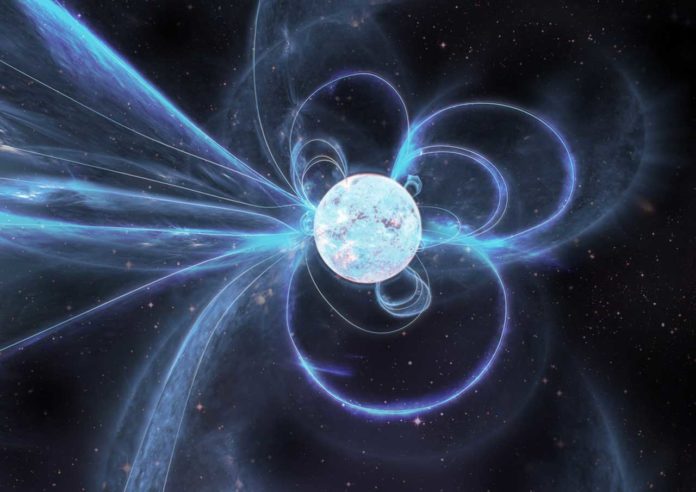A magnetar is a neutron star with an ultra-strong magnetic field. They are also known as the strongest magnets in the Universe.
Until now, astronomers have detected only 30 magnetars in and around the Milky Way. Some of the magnetars were found to release radio pulses similar to pulsars. Tracking how the pulses from these ‘radio-loud’ magnetars change after some time offers a unique window into their advancement and geometry.
In March 2020, astronomers detected a magnetar named Swift J1818.0-1607 emitting a bright X-ray burst. Quick subsequent observations identified radio pulses generating from the magnetar. Inquisitively, the radio pulses’ presence from J1818 was very quiet to those seen from other radio-loud magnetars.
The pulses from J1818 were much brighter at low frequencies than high frequencies – similar to what is seen in pulsars, another more common type of radio-emitting neutron star.
To better understand how J1818 would evolve, a team led by scientists from the ARC Centre of Excellence for Gravitational Wave Discovery (OzGrav) observed it eight times using the CSIRO Parkes radio telescope (also known as Murriyang) between May and October 2020.
During this time, they found the magnetar went through a brief identity crisis: in May, it was still emitting the unusual pulsar-like pulses that had been recognized previously: in any case, by June, it had begun flashing between a bright and a weak state. This flashing behavior arrived at a peak in July where they saw it flicking back and forth between emanating pulsar-like and magnetar-like radio pulses.
Study lead author and Swinburne University/CSIRO Ph.D. student Marcus Lower said, “This bizarre behavior has never been seen before in any other radio-loud magnetar. It appears to have only been a short-lived phenomenon as by our next observation it had settled permanently into this new magnetar-like state.”
Scientists also observed pulse shape and brightness changes at different radio frequencies and compared their observations to a 50-year-old theoretical model.
Lower said, “From our observations, we found that the magnetic axis of J1818 isn’t aligned with its rotation axis.”
“Instead, the radio-emitting magnetic pole appears to be in its southern hemisphere, located just below the equator. Most other magnetars have magnetic fields that are aligned with their spin axes or are a little ambiguous.”
“This is the first time we have definitively seen a magnetar with a misaligned magnetic pole.”
“Remarkably, this magnetic geometry appears to be stable over most observations. This suggests any changes in the pulse profile are simply due to variations in the height the radio pulses are emitted above the neutron star surface. However, the August 1st, 2020 observation stands out as a curious exception.”
Lower said, “Our best geometric model for this date suggests that the radio beam briefly flipped over to a completely different magnetic pole located in the northern hemisphere of the magnetar.”
A distinct lack of any changes in the magnetar’s pulse profile shape indicates the same magnetic field lines that trigger the ‘normal’ radio pulses must also be responsible for the pulses seen from the other magnetic pole.
The study suggests this is evidence that the radio pulses from J1818 originate from loops of magnetic field lines connecting two closely spaced poles, like those seen connecting the two poles of a horseshoe magnet or sunspots on the Sun. Unlike most ordinary neutron stars, which are expected to have north and south poles on opposite sides of the star-connected by a donut-shaped magnetic field.
This peculiar magnetic field configuration is also supported by an independent study of the X-ray pulses from J1818 detected by the NICER telescope onboard the International Space Station. The X-rays appear to come from either a single distorted region of magnetic field lines that emerge from the magnetar surface or two smaller but closely spaced regions.
Journal Reference:
- M E Lower et al. The dynamic magnetosphere of Swift J1818.0−1607, Monthly Notices of the Royal Astronomical Society (2020). DOI: 10.1093/mnras/staa3789
